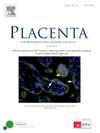内质网应激通过调节分娩初期的CYLD诱导滋养细胞热亡
IF 3
2区 医学
Q2 DEVELOPMENTAL BIOLOGY
引用次数: 0
摘要
前言早产(PTB)对新生儿健康有重大风险,强调了对分娩启动机制的更深入了解。母胎界面炎症和内质网应激(ERS)升高与PTB的发病有关,但其分子机制尚不清楚。本研究研究了足月和早产胎盘组织中的ERS水平,并探讨了ERS和圆柱状瘤病(CYLD)在滋养细胞焦亡中的作用,以揭示PTB的机制。方法将60例孕妇分为足月分娩组(TL)、足月未分娩组(TNL)、早产组(PTL)和足月未分娩组(PTNL)。使用Western blotting、免疫组织化学和免疫荧光技术评估ERS和焦热相关分子(包括CYLD)的蛋白表达。real-time PCR检测IL-1β和IL-18 mRNA水平。采用LPS和ATP共处理方法建立体外炎性滋养细胞模型。用Thapsigargin (TG)和Tauroursodeoxycholate (TUDCA)实现ERS调制。结果ptb相关组和炎性滋养细胞模型均有明显的ERS和焦热相关蛋白水平升高。TG增加CYLD表达,诱导细胞焦亡,而TUDCA减轻了这些作用。CYLD沉默减少滋养细胞焦亡,而过表达则否定了TUDCA的抑制作用。我们的研究结果表明,炎症条件下通过CYLD介导的ers介导的滋养细胞焦亡揭示了PTB的机制,为调节分娩发作提供了一个潜在的靶点。本文章由计算机程序翻译,如有差异,请以英文原文为准。
Endoplasmic reticulum stress induces trophoblast pyroptosis via regulating CYLD during labor initiation
Introduction
Preterm birth (PTB) presents significant risks to neonatal health, highlighting a deeper understanding of the mechanisms underlying labor initiation. Maternal-fetal interface inflammation and heightened endoplasmic reticulum stress (ERS) are associated with the onset of PTB, while the molecular mechanism remains unclear. This study investigates ERS levels in placental tissues from term and preterm pregnancies and examines the role of ERS and cylindromatosis (CYLD) in trophoblast pyroptosis to reveal the mechanisms underlying PTB.
Methods
A total of 60 pregnant women were recruited and categorized into four groups: term labor (TL), term not in labor (TNL), preterm labor (PTL), and preterm not in labor (PTNL). Protein expressions of ERS and pyroptosis-related molecules, including CYLD, were assessed using Western blotting, immunohistochemistry, and immunofluorescence. IL-1β and IL-18 mRNA levels were quantified via real-time PCR. An in vitro inflammatory trophoblast model was established using LPS and ATP co-treatment. ERS modulation was achieved with Thapsigargin (TG) and Tauroursodeoxycholate (TUDCA).
Results
Elevated ERS and pyroptosis-related protein levels were observed in PTB-associated groups and the inflammatory trophoblast model. TG increased CYLD expression and induced cell pyroptosis, while TUDCA mitigated these effects. CYLD silencing reduced trophoblast pyroptosis, whereas overexpression negated TUDCA's inhibitory impact.
Discussion
Our findings indicate that ERS-mediated trophoblast pyroptosis via CYLD under inflammatory conditions sheds light on PTB mechanisms, providing a potential target for modulating labor onset.
求助全文
通过发布文献求助,成功后即可免费获取论文全文。
去求助
来源期刊

Placenta
医学-发育生物学
CiteScore
6.30
自引率
10.50%
发文量
391
审稿时长
78 days
期刊介绍:
Placenta publishes high-quality original articles and invited topical reviews on all aspects of human and animal placentation, and the interactions between the mother, the placenta and fetal development. Topics covered include evolution, development, genetics and epigenetics, stem cells, metabolism, transport, immunology, pathology, pharmacology, cell and molecular biology, and developmental programming. The Editors welcome studies on implantation and the endometrium, comparative placentation, the uterine and umbilical circulations, the relationship between fetal and placental development, clinical aspects of altered placental development or function, the placental membranes, the influence of paternal factors on placental development or function, and the assessment of biomarkers of placental disorders.
 求助内容:
求助内容: 应助结果提醒方式:
应助结果提醒方式:


